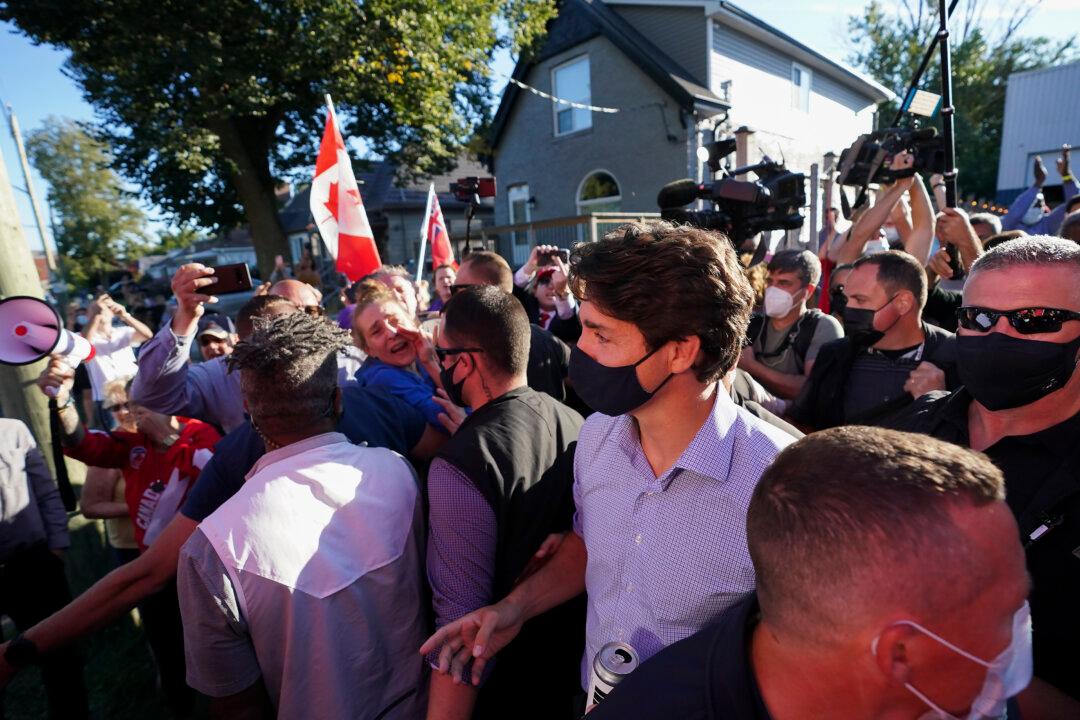Two days before Prime Minister Justin Trudeau announced the 2021 election, a confidential government memo indicated the decision to receive the COVID vaccine was split along political party lines.
The memo from the Privy Council Office, dated Aug. 13, 2021, and titled “Emerging Evidence on Covid-19,” said voters who supported the Liberals and NDP were more likely to get a COVID shot than Conservative voters.
The memo was obtained through an access to information request, according to Blacklock’s Reporter on June 8, and dated two days before Trudeau called the federal election on Aug. 15, 2021.
At the time, Trudeau announced he would campaign on a mandatory vaccination policy, which would see unvaccinated Canadians banned from travel, fired from public service jobs and, in many provinces, refused entry to places the government deemed non-essential, like restaurants, pools, fitness centres, movie theatres, and museums.
“We’ve seen where Conservative backbenchers have referred to some of this government’s decisions as tyrannical in terms of how we’re creating mandates for vaccination of public servants or vaccination for people on trains or airplanes,” he said at the time. “Well, the answer to tyranny is to have an election.”
Trudeau added that those who disagree with the direction the government was taking “should have an opportunity to make themselves heard. That’s what this election is all about. It’s allowing Canadians to weigh in.”
The memo stated that “the most common factors positively associated with intention to vaccinate were male gender, older age, higher education, adequate knowledge or health literacy, trust in experts and government, history of a prior influenza vaccine, higher socioeconomic status, and heightened worry or concern about COVID-19.”
“Partisanship was associated with intention to vaccinate. Those who voted liberal/democrat expressed intention to vaccinate at higher rates than those who voted for other parties,” it said.
“Those who voted Liberal or NDP in the 2019 election were most likely to indicate the intention to vaccinate compared to those who voted for other parties. Alberta and Saskatchewan have the highest percentage of the population who do not intend to vaccinate.”
At the time, the federal Liberal party had no seats in either of the two Prairie provinces.
A subsequent Privy Council memo on Aug. 19, 2021, titled “Closing The Gap For Vaccine Hesitancy During The Last Mile of Vaccine Rollout,” said there were “pockets of vaccine hesitancy in parts of Canada that traditionally voted Conservative.”
“There are pockets across the country of low vaccine uptake including northern parts of British Columbia, Alberta and Saskatchewan, rural southern Ontario and southern Manitoba. Reasons for lower uptake in these regions are multifactorial and complex and include access issues, prevailing political ideologies, regional industry, demographics and more,” said the memo.
In the 2021 election, the Liberal Party was returned to power with 32.6 percent of the popular vote, less than the 2019 election when it captured 33.1 percent of the vote.
The second memo noted that during the 2021 election campaign, Canada already had one of the highest rates of voluntary vaccination in the world, without mandatory policies.
“Canada is among the top countries in the world in terms of one dose coverage and we are quickly gaining ground on two dose coverage,” it said.
The government document suggested an estimated 72 percent of all Canadians had received at least one COVID shot compared to other countries, such as the United Kingdom (70 percent), France (67 percent), Germany (62 percent), and the United States (59 percent), Blacklock’s reported.





